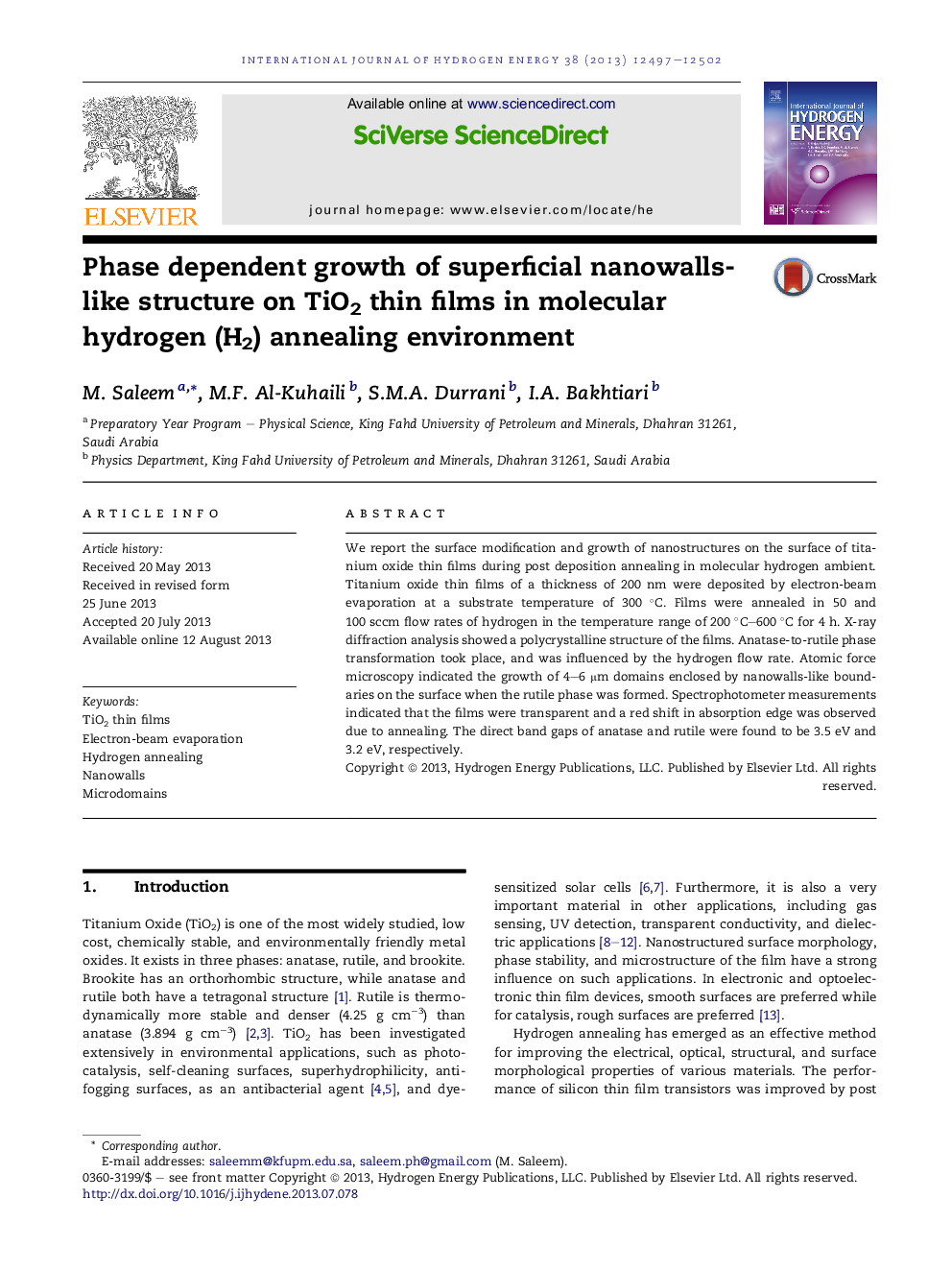| Article ID | Journal | Published Year | Pages | File Type |
|---|---|---|---|---|
| 1281478 | International Journal of Hydrogen Energy | 2013 | 6 Pages |
•The effect of hydrogen annealing on TiO2 thin films was examined.•Low temperature anatase-to-rutile phase transformation was observed.•Nanowalls-like boundaries on the surface of the films were observed where rutile phase was formed.•Changes in band gap were noticed where rutile phase was formed.
We report the surface modification and growth of nanostructures on the surface of titanium oxide thin films during post deposition annealing in molecular hydrogen ambient. Titanium oxide thin films of a thickness of 200 nm were deposited by electron-beam evaporation at a substrate temperature of 300 °C. Films were annealed in 50 and 100 sccm flow rates of hydrogen in the temperature range of 200 °C–600 °C for 4 h. X-ray diffraction analysis showed a polycrystalline structure of the films. Anatase-to-rutile phase transformation took place, and was influenced by the hydrogen flow rate. Atomic force microscopy indicated the growth of 4–6 μm domains enclosed by nanowalls-like boundaries on the surface when the rutile phase was formed. Spectrophotometer measurements indicated that the films were transparent and a red shift in absorption edge was observed due to annealing. The direct band gaps of anatase and rutile were found to be 3.5 eV and 3.2 eV, respectively.
